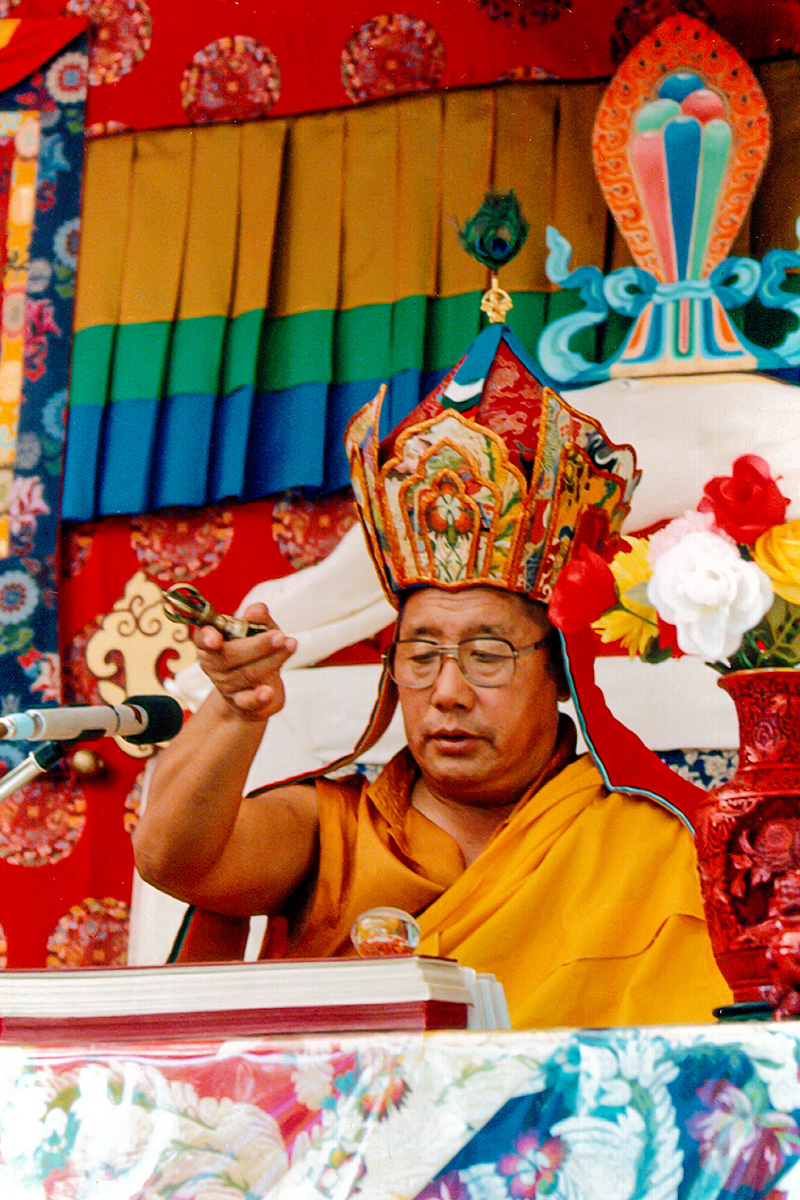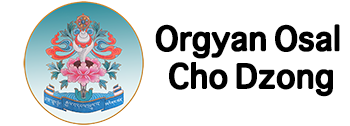HIS HOLINESS PEMA NORBU RINPOCHE
His Holiness Pema Norbu (“Penor”) Rinpoche spent his life practicing and realizing the teachings of the Buddha, insuring that the teachings would not only not be lost, but that they would expand to the farthest corners of the world. What follows is information gathered from first-hand sources and many Ngagyur Nyingma Institute books. We pray this biography will continue to preserve, propagate and expand the teachings, just as His Holiness wished!
Recognition
The Third Drubwang Pema Norbu (“Penor”) Rinpoche was born in the Powo region of Kham, East Tibet to Sonam Gyurme (father) and Dzom Kyi (mother) during the twelfth month of the lunar calendar the year of the Water Monkey (1932). His birth took place during the most bitter, cold, bleak and dry part of the winter season, a time when nothing grows and the land is blanketed with thick, deep, heavy snow. Yet at the time of his birth, sweetly-scented flowers burst into blossoms all around the home of the infant tulku. Moreover, two search parties for the new tulku, one sent by Dzogchen Rinpoche and one sent by Khenchen Ngagi Wangpo, met each other at the same time at this same house, thus confirming the recognition without doubt. Communications and travel in the high mountains of Eastern Tibet were not as speedy as today so this was considered to be a very auspicious sign.
Khenchen Ngagi Wangpo Rinpoche foresaw the exceptional destiny of the new incarnation. In 1936, the year of the Fire Mouse, the young Pema Norbu (“Penor”) Rinpoche was invited to the Palyul monastery where he took refuge with the great and learned Khenpo. Khenchen Ngagi Wangpo Rinpoche performed the traditional hair-cutting ceremony and gave him the name “Dhongag Shedrup Tenzin.” Khen Rinpoche then granted him the long life empowerment of Amitayus and composed the long-life prayer which was chanted daily by thousands of Penor Rinpoche’s followers all over the world through until the time of his parinirvana.
Rinpoche was formally enthroned by his master Thubten Chökyi Dawa (1894–1959) [the second Chögtrul Rinpoche], and Karma Thekchok Nyingpo (1908–1958) [the fourth Karma Kuchen Rinpoche]. In time, Penor Rinpoche would become the Eleventh Throneholder of Palyul Monastery with its more than four hundred branch monasteries. He spent many years at Palyul, studying and receiving teachings from numerous masters and scholars. He received mind-to-mind transmission from Lungtrul Rinpoche Shedrup Tenpai Nyima. He also received training and instructions from the Fourth Karma Kuchen Rinpoche, the Tenth Throneholder, who carefully prepared him as his successor. In turn, His Holiness Penor Rinpoche trained the Fifth Karma Kuchen Rinpoche.
There are many instances demonstrating Penor Rinpoche’s extraordinary powers even as a young child. On one occasion he was playing with an old and precious vajra when it suddenly slipped through his fingers and dropped to the ground, breaking in two. Fearing a reprimand from his teacher, he quickly glued it back together with his own saliva, making the vajra stronger than ever before. A similar incident occurred later on when, during the Chasum ceremony, he accidentally dropped his ritual bell onto the stone floor. Everyone assumed that the bell had shattered, but when Penor Rinpoche picked it up, it was unbroken and rang even more sweetly than before. At the age of 15, Penor Rinpoche left his footprint in stone near Dago retreat monastery above Palyul where it can still be seen today.
Once while he was still young, Rinpoche was approached by an old man who insisted that he practice Phowa for him. Innocently he complied with the request. At the end of the practice, he shocked to see that the old man had passed away – the Phowa had worked only too well! Immediately he started to practice again, to revive the corpse lying there in front of him. To his immense relief, the old man came back to life, but instead of thanking him, he shouted, “For heaven’s sake, why did you bring me back? I was already in the Pure Land of the Buddha Amitabha!”
Education
Penor Rinpoche studied with many lamas, benefiting most deeply from the warm and close relationship he enjoyed with his great master, the Second Chögtrul Rinpoche. At his lay ordination, Chögtrul Rinpoche gave him the name Thubten Lekshe Chökyi Drayang, “Upholder of Buddha’s Teaching with the Eloquent Speech of Melodious Dharma.” At Dago retreat monastery, he received and engaged in the Namchö Dzogchen preliminary practice teachings of Sangye Lakchang, “Buddha in the Palm of the Hand.” He also learned general subjects, including writing, poetry, astrology and medicine, and went on to study the sutras with Khenpo Nuden, Khenpo Sonam Dondrup and Khenpo Gondrup.
At the age of twelve, in the water sheep year 1944, Penor Rinpoche began to receive the most important transmissions and empowerments of the Nyingma School. From Chögtrul Rinpoche he received the Great Empowerment of the Kagyé and the Rinchen Terdzö empowerments, transmissions and secret sealed protector empowerments. From Karma Kuchen Rinpoche, he received the Namchö, the terma revelations of Ratna Lingpa and the major empowerments of the cycles of Kagye and Lama Gongdu.
At the age of thirteen, he received novice (getsul) ordination and with it the name “Dongak Shedrup Tendzin Chokle Namgyal” (All-Victorious Holder of the Teachings of Study and Practice of the Sutras and Tantras). At twenty-one he took full (gelong) ordination with his master at Tarthang Monastery and received a vast number of teachings covering all the essential instructions and empowerments of the Nyingma tradition. This lineage of the vinaya is a very pure one, transmitted to Tibet by Shantarakshita during the time of Padmasambhava.
At the time of his ordination, Chögtrul Rinpoche offered Penor Rinpoche the yellow robe that had been treasured and handed down by generations of lineage holders. Despite the tremendous difficulties of escaping from Tibet, Penor Rinpoche was to carry this robe with him all the way to India while leaving behind many other precious possessions. As a direct result, during his life in exile he was able to ordain more than 10,000 monks and nuns, so making a priceless contribution towards the stability of the vinaya vows and Vajrayana practice during this age of degeneration.
From the great Khenpo of Kathok monastery, Khenpo Lekshe Jorden, Penor Rinpoche received many transmissions. One special one was the Kham tradition of the Anuyoga empowerment of the Do Gongpa Dup through Mokton Dorje Palzang’s famous empowerment ceremony “The River of Honey.” Penor Rinpoche also received the ancient tradition of Kathok monastery and at the same time the empowerments, transmissions and teachings of Jamgon Kongtrul’s “Treasury of Essential Instruction;” Tertön Dorje Lingpa’s “Condensed Utterance of the Lama;” the Dorje Lingpa terma “Hung Kor Nyingtik;” Ngari’s Complete Condensation of Kagye; and Lerab Lingpa’s great terma revelation, the cycle of Tendrel Nyesel. The transmissions he received from Karma Kuchen Rinpoche included Nyelpa Delek’s Anu Yoga empowerment from the Rinchen Trengwa tradition.
Another of his teachers was Khenpo Khyentse Lodrö, also known as Khenpo Nuden, from Kathok. In a forest above the Dago retreat centre, Khenpo Khyentse Lodrö performed the Drupchen of the Anuyoga Dupa Do, at the same time giving the very first transmission of his newly written four volumes on Anuyoga. Khenpo told the following story. Before the second Drubwang Pema Norbu had passed away, he had given the Khenpo a small knife. At the time he had not given it much thought, but now he realized what this had really meant. The knife represented the sword of wisdom, and when he handed it to him, it was as if Pema Norbu was granting the Khenpo his blessing to finish writing these important new treatises, so as to be able to transmit them to his next incarnation.
From Khenpo Pema Jigme, a learned Khenpo from the Palyul tradition in Golok, Penor Rinpoche received the nine volumes of Jigme Lingpa’s collected works, the thirteen chapters of Karma Chagme’s “Ah Cho” and the collected works of So Wangdrak Gyatso. While he was receiving this transmission, Penor Rinpoche began to make intricately woven knots in blessing cords with his tongue, something which is done only by the most highly accomplished masters. He continued to make these special blessing cords until 1958. They were renowned for affording powerful protection when worn. One such cord is kept and treasured by one of his attendants today.
Around this same time, Penor Rinpoche happened to write the syllable Ah on a white conch shell. Once the ink had worn away, the syllable remained embossed on the shell. This shell is still kept as a object of veneration in Palyul monastery in Tibet.
Having received all the transmissions of the Kangyur and Tengyur, as well as completing a Vajrakilaya retreat, Penor Rinpoche entered into retreat with his master Chögtrul Rinpoche. To go into retreat with one’s own teacher is a rare privilege enjoyed by very few. Penor Rinpoche spent four consecutive years in retreat at Tarthang Monastery in the same room as his master. Already elderly and with failing eyesight, Chögtrul Rinpoche endured great personal hardship in order to give Penor Rinpoche virtually all the transmissions practiced in the Palyul tradition emphasizing the empowerments, transmissions and secret oral instructions of Tertön Migyur Dorje’s Namchö and the terma revelations of Ratna Lingpa.
Beginning with Ngöndro, up to the most profound innermost teachings of Dzogchen, he stressed every practice until the naked truth was revealed to his young disciple. He said, “If I am not able to transmit all the empowerments, transmissions and teachings to the third Pema Norbu Rinpoche before I leave this world, then this precious human life of mine will have been wasted.” With the constant guidance of his master, Penor Rinpoche successfully completed all the stages of the practice, accomplishing the root recitations of the Three Roots (lama, yidam, and khandro), the Namchö preliminary practices, tummo and tsalung, and the actual foundation practice of the Dzogchen “Buddha in the Palm of the Hand”, including trekchö, clear light tögal, inner tögal practice, darkness practice, and training in the dream state, the nature of sound and the pure realms.
HH Dilgo Khyentse Rinpoche once said, “Penor Rinpoche is a saint who has transcended the boundary of samaya.” By this, he meant that Penor Rinpoche had actualized the experience of inner wisdom, and so realized the state in which there is nothing to grasp and nothing to release.


